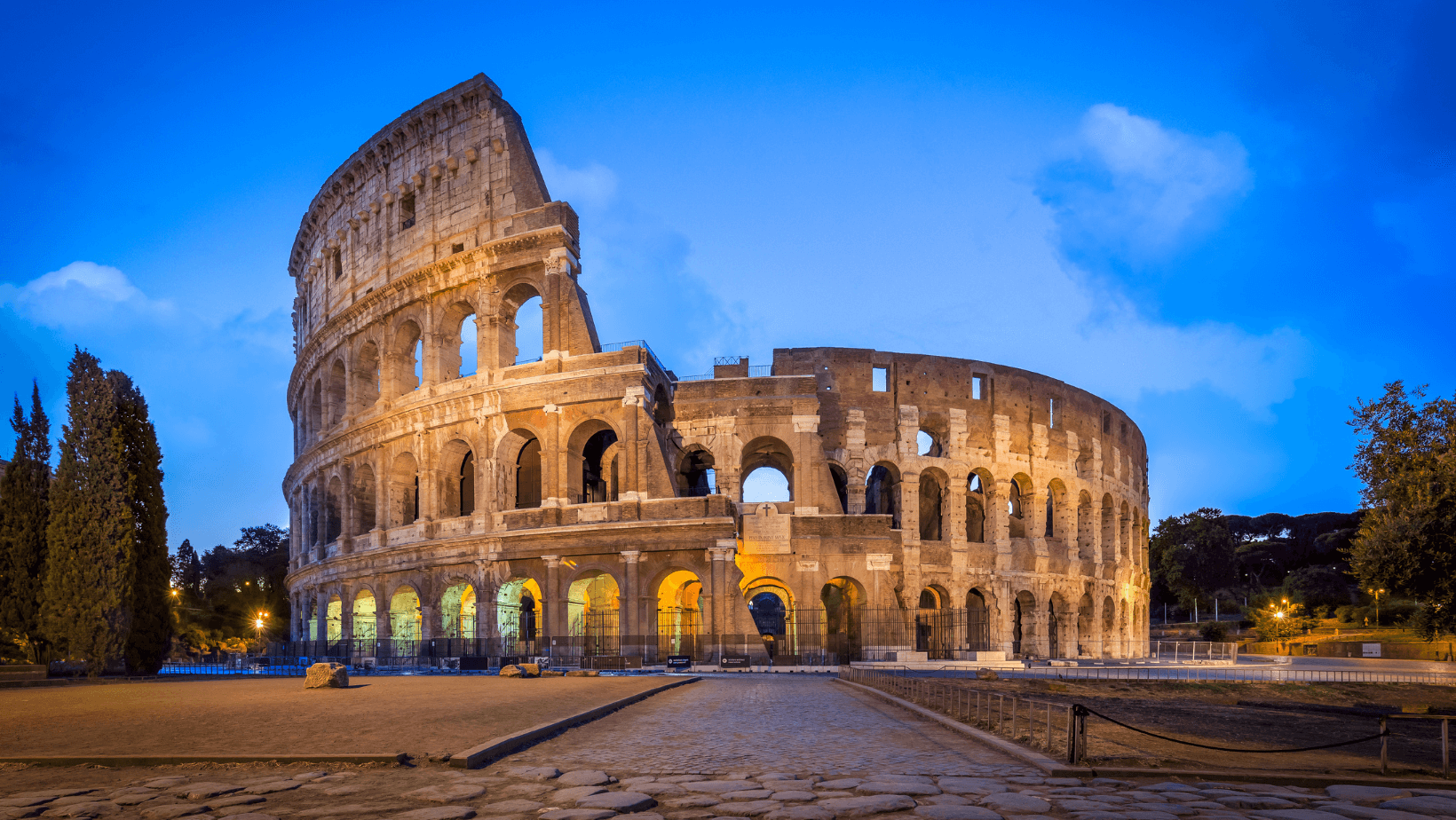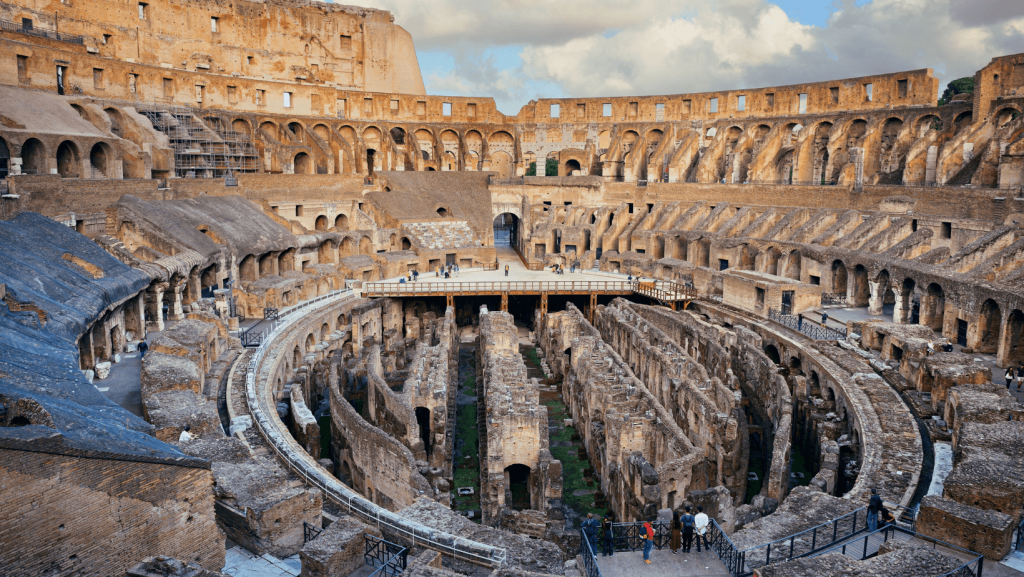
Constructing The Colosseum
Construction of the Colosseum began between 70 and 72 CE during the reign of the Roman emperor Vespasian. It was built east of Palatine Hill, on the space that was once the former emperor Nero’s Golden House. Nero’s palace was home to an artificial lake at the center of the complex which was drained so the Colosseum could take its place. This placement was both practical and symbolic. Vespasian wanted to replace the tyrannical emperor’s private lake with a public amphitheater that could host tens of thousands of Roman citizens.
Vespasian died in 79 CE before the structure was opened to the public, but his son and successor Titus officially dedicated the Colosseum – originally known as the Flavian Amphitheater – the following year. The celebration featured 100 days of games, including gladiatorial combats and wild animal fights. In 82 CE, emperor Domitian added the uppermost story, completing the work on the massive amphitheater.
Nearly all amphitheaters constructed up to that point were dug into surrounding hillsides for extra support. But the Colosseum is a freestanding structure of stone and concrete. To help support the weight of the massive structure, it was built with a complex system of barrel vaults and groin vaults. The main structural framework and facade are made of travertine, a dense rock. The secondary walls are volcanic tufa, and the inner bowl and arcade vaults are concrete.

The Colosseum in Ancient Rome
Measuring roughly 620 by 513 feet, the Colosseum was the largest amphitheater in ancient Rome. It could seat around 50,000 spectators, who were shielded from the sun by a massive retractable velarium. To help accommodate the massive crowds, the amphitheater included 80 entrances – 76 for the spectators, two for the event participants, and two exclusively for the emperor.
Perhaps the most notorious events held in the Colosseum were hand-to-hand combats between gladiators. Thousands of these fights were held during the four centuries in which the amphitheater saw active use. In addition to gladiator combat, the Colosseum also hosted contests between men and animals, mock naval engagements, dramas, reenactments, and public executions.
Over time, the Romans’ interest in the games waned and the last recorded games were held in the 6th century. After the fall of the Western Roman Empire, the Colosseum began to deteriorate. In addition to neglect, a series of earthquakes also caused extensive damage to the building. It continued to fall into further disrepair for hundreds of years. In the 19th century, preservation of the Colosseum began in earnest, with notable efforts led by Pius VIII. More recently, a large-scale restoration project was undertaken in the 1990s.

Modern Usage
Today, the Colosseum is one of Italy’s most popular tourist attractions, receiving over 6 million visitors annually. In addition to seeing the structure itself, changing exhibitions about the culture of ancient Rome are also regularly set up for visitors to browse.
Furthering its position as a must-see attraction, on July 7th, 2007 the Colosseum was named one of the Seven Wonders of the Modern World. The other locations on the list are Chichén Itzá, Christ the Redeemer, The Great Wall of China, the Taj Mahal, Petra, and Machu Picchu.
On top of hosting millions of tourists, it has also become the site of several important Roman Catholic ceremonies in modern years. For example, every Good Friday, the Pope leads the Way of the Cross procession in the Colosseum. This ceremony is intended to recognize the location’s close ties to the church and to honor the early Christians that died in the Colosseum.
Weekly Trivia
Enter your guess to reveal the answer.

